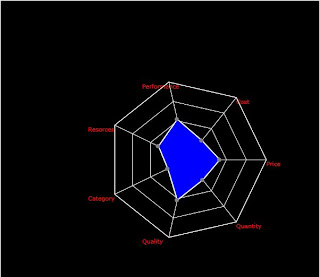Claims based authentication(Basic details)
In this article, I am trying to explain some basics of new claims
based authentication with live scenario.
First of all, what
are authentication methods are available?
ASP.NET when launched
supported 3 types authentications namely:
1. Windows
Authentication (better for Intranet scenarios and credentials are stored
inside Active Directory),
2. Passport
Authentication (Now Live ID Authentication, can be used via Claims Based Authentication).
3. Form
Based Authentication (where user data is maintained inside SQL
Database).
ASP.NET 2.0 provided some
tools and classes and made FBA much simpler. It automatically created required
tables, stored procedures, UI to manage Users (Membership Providers), their
access rules by their roles (Role Provider) and store some more data about
users (Profile Provider).
In the Microsoft world, authentication is usually performed by Active
Directory. I claim to be Arvind, and i prove this to Active Directory by
providing my password. Other systems don’t trust me, they trust Active
Directory.
Active Directory gives systems a bit of data that says “yeah, I
personally know this person. It really is Aravind.”
In single environment Claims based authentication is not needed.
But, Privacy regulations are impacting what kind of information capture and
store about user. Because, in some case user do not want to give his personal
information.
And one more case is that, In case of merging two sites, then if both are
having different authentication type, then it becomes a mess.
In this case, if claims based authentication has implemented, then it can
handle both with a common method.
Scenario:
Suppose, I am having liquor online shop purpose to sell liquor direct to the
customer. So my company service is to provide imported liquor to customer’s
hand without any intermediate. I am having one website called myliquor.com. So
customer can place his order over the net. But According to Law of Indian
government, liquor should not sell to the people whose age is lesser than 18.
But, I don’t know whether the person who is placing order is eligible or
not. So what I will do is, I will ask to government to provide some identity
(token) that will ensure about customers age. Consider I will use the voter id
login service from the government. So that it can tell the age of a customer.
By doing this, No need to maintain customer’s personal information for me.
Also No need to check the age eligibility for me.
Best Example: while using the CRM 2011 online, we have use windows live id.
Here CRM online get tokens from windows live.
There are several
components to claims authentication. The STS(identity provider) that issues the
tokens to entities. An application makes decision by consuming these tokens.
In between, identity provider and application there is a federation provider
manages trusts for application and translates token containing claims in such a
way that application can understand.
Classical authentication
approach means, that every application has its own authentication mechanism
that leads to many different problems.
One of the most important
problems of this approach
is dispersion of user identity.
Each application holds its own copy of user’s data which is used to build user
identity. This kind of approach does not fit for single sign on authentication.
Nowadays, mechanism called
SSO is becoming more and more popular due to possibility for allowing
authentication in many applications using one application of user identity.
User logs once (authenticates and authorizes) and gains access to all systems
without being prompted to log in again.
In next article, I will explain how we set claims based authentication.

Comments
Post a Comment